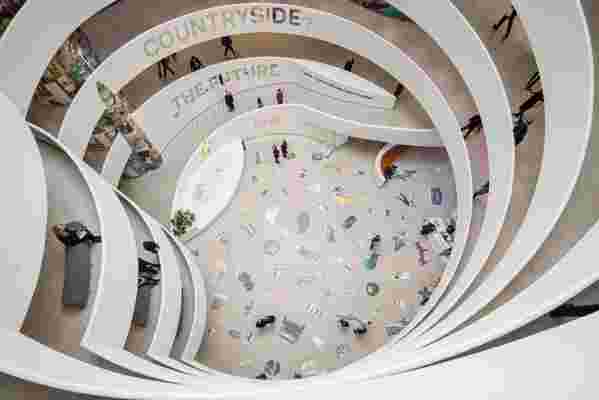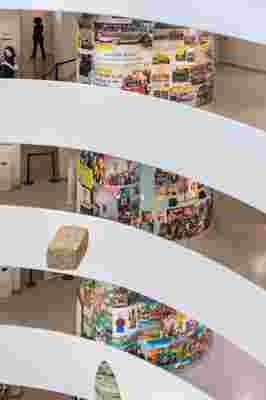In 2007, when the United Nations announced that by 2050, 70% of the earth's human population would be living in cities, the world jumped to plan for an increasingly urban future. Soon after, however, OMA principal Rem Koolhaas began to search for a different path. At New York's Guggenheim Museum, the architect—with AMO and a host of international collaborators—has staged a new show to explore living, producing, and designing in the countryside: what it defines as the 98% of the world's surface (oceans included) that does not make up its 2% of cities. The countryside is explored as a historical concept in ancient societies, as well as through the varying attempts to build planned countrysides in socialist countries, through new food and energy production methods, through land conservation, through climate change, and through off-the-grid living in examples across the globe from Chile to Japan.
While the show offers a myriad of diligently researched case studies of successful and unsuccessful countryside initiatives, it doesn't come to any specific conclusion. Like a dissertation lacking a thesis, it winds up the museum's spiral ramp rotunda just to send the visitor right back down. But the agenda of the show is not to present any specific call to action, says Koolhaas, who 40 years ago wrote Delirious New York , a love letter to the city claiming that life would not be possible without "the culture of congestion" (he has since changed his tune: "Roughly 10 years ago, I became nervous and dissatisfied with that concentration"). Instead, the show's agenda is simply to bring focus back to the countryside itself. It's an added bonus if it sparks a migration. On the helm of this week's opening of Countryside, the Future , AD spoke with Koolhaas about his vision for this future in the idyll.

Looking down through the rotunda of Countryside, the Future .
Architectural Digest : What are the contemporary incentives to move to the countryside?
Rem Koolhaas : I don’t think I can point out specific reasons, but I think the intention of the show is more to talk about the need than the actual incentives. The motivation of the show is to focus on the agenda and to insist that the grave neglect is irresponsible and self-defeating, and that people need to find incentives in themselves. And of course, one great incentive is that life in the city is not wonderful in many ways and that there is an incredibly beautiful part of the world that we are completely ignoring and rarely venturing into. That is one part: the beauty and the urgency of certain potentials that are there. I cannot enumerate the reasons you should go, that there are jobs there, et cetera.
AD : All the examples in the show of countryside living or productivity are hyperlocal solutions or an incentive that came from within a person or a specific community.
RK : Yeah, came from within.

Installation view of Countryside, the Future .
AD : We’ve seen that planned countrysides from the political side have always failed…
RK : Or they are problematic.
AD : Exactly. If the government can't mandate putting that agenda into people's minds, how do you envision it could spread organically?
RK : Basically, the show will travel. That is the first way of spreading it. It travels to China, Japan, but also Africa. The one good thing about current technical devices like the mobile phone is that there is an incredible amplification of communication potential and an incredible widening of sources and correspondence. I think that will hopefully take care of itself. But the beautiful thing about the show is that it launches many different levels of activation. There was someone from the U.N. who wanted the secretary general to visit the show. I think you say that the state-driven incentives are failures but still the state remains an important player. I think that is something you see particularly in China.
AD : I am seeing this show from the lens of being American and having grown up in a capitalist society. Looking at a socialist example like China, that perspective is fascinating to me. How well will a capitalist society be incentivized?
RK : I think the timing of this show is very fortunate. I think both authoritarian and democratic regimes are wondering how they should imagine their future. There is a real awareness, in general, that neither direction can continue the way it goes now. Particularly, the pressure of climate change, whether America is part of it or not, I think, weirdly enough, makes not much difference. There is an awareness that things have to go differently and some kind of mobilization needs to take place, and whether a democracy or other systems can achieve that mobilization is the key. In the current political context, the current both urgency and uncertainty, I think we tried to offer many different aspects to think about.
AD : The thesis of the show is: Think.
RK : Yes.
